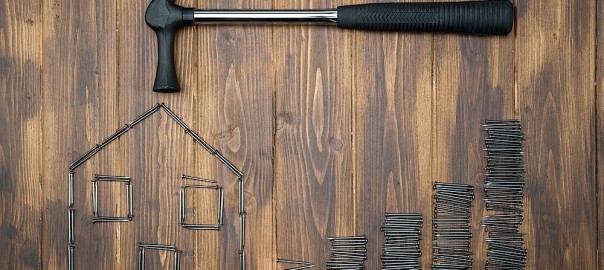The Basics Of A Real Estate Flip In 4 Easy Steps
By Paul Esajian on March 4, 2016
Real estate investors have been flipping properties for decades. Only in the past couple of years has the popularity hit the mainstream. There are more TV shows and books dedicated to rehab and flips than ever before. As simple as the process may look there is more to it than meets the eye. If you don’t do the right work for the right property your profits will be minimal at best. One of the things that make real estate investing so great is that anyone can do it. If you have an interest in flipping properties there are four basic steps you need to know. These are at the core of every flip you will do. Here are the four basics of a flip deal.
- Property Evaluation. If you ever watch one of the many flip shows on TV they make property evaluation look so easy. On one hand there are a few set formulas you can follow. On the other hand there are many variances that can throw your numbers off. One of the most basic formulas for evaluating a property is to add the purchase price and rehab costs and subtract that from the estimated after repair value. There are many instances where a deal may look great at first glance. Upon closer inspection the numbers may not be as good as you think. You need to be knowledgeable enough to know all of the repair costs associated with the deal. If you are new to the business you should ask a contractor to view the house with you. Once you have an idea of the repair costs you need to talk to your real estate agent and see what properties in the market are selling for. It can be difficult in areas where there are few comparable sales. You also need to understand all of the costs from the time you acquire the property to the time you sell it. Before you make any offer you need to be confident that you know all of the costs and expenses with owning and improving the property.
- Acquisition. As we mentioned the purchase price is one of the key elements in estimating your bottom line. You need to find deals that you can get for the lowest possible price. Many of these deals will come from distressed property owners or have some major flaw associated with the property. It is important that you only make offers on deals that you see upside in. Getting a deal approved doesn’t do you much good if the purchase price is too high. With every offer you make you should be able to justify your price. You can do this through the amount of work the property needs, the time on the market or the speed in which you can close. Finding good deals can be a very frustrating practice. What you don’t see on TV is all of the deals that aren’t accepted. They may make ten offers and only get one counter offer. If you are consistent on making offers that work for you eventually you will get a deal accepted.
- Managing The Rehab. There is a sense of enjoyment and relief on your closing day. The reality is that your work is only just beginning. Any investor can have a vision for what they want to do but very few can actually put it into place. With almost every flip there will be roadblocks and potholes to navigate. Even if you trust your general contractor to run the project you are the property owner. You need to constantly keep an eye on the budget, the schedule and the quality of the work that is being done. This work directly impacts the bottom line. If you go over budget you need to be able to adjust. If someone doesn’t show up when they are supposed to you need to work around it. Home flippers don’t want to finish just to say they turned a property over in a few weeks. Every day that you own the property costs money. You are paying interest, taxes, insurance and utilities for as long as you own the property. Time really is money when it comes to flipping. Not only do you need the work done quickly but you need it done right. Managing your rehab is not an easy task but it is essential for your success.
- Sale. When the home is finished you still have one more step to take. You need to get your property sold. Here is where you may need to step out of the way and let your real estate agent do their job. If you have poured your blood, sweat and tears into the property over the last six weeks there will be an obvious emotional attachment. This attachment may lead you to listing the property for more than it is really worth. This is one of the worst things you can do. By listing too high you will lose many prospective buyers. Real estate agents will not want to show the home and it will quickly collect dust online. By listing at the right price you can attract more buyers and let the market do the work. You need to look at every offer you get and think about the big picture. A more qualified buyer at a slightly lower price often makes more sense than the opposite. The sale is the final piece of the flip puzzle.
These are the four basic steps of a flip. While there are many other sub-steps along the way everything starts and ends with these areas. If you are comfortable in these areas you can start looking to flip real estate today.